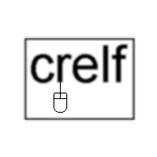So while I follw and partially agree with waht you've said here, I do want to highlight a couple of things:
It's not necessarily about recognition, it's about ownership.
You work for NI - you're part of the personified corporation, so that last example isn't quite analogous.
Let's take a look at the word you chose here: "valuable". Valuable to you? NI? The community? Possibly all three? You gave up your ownership of your IP to further NI and the community. But you gave up your direct ability to profit from your IP's value. You can profit indirectly, of course, but continued employment by the company you gave it to, and by the ability to use the IP more easily, but I don't see a tangible profit disconnected from that.
So what you're saying is that, if we want to increase the exposure of our IP, we should give it to NI. That makes sense, as long as we're willing to give up our IP - and I'm totally on board with people giving up their IP if they want to. BUT I don't think that posting it to a particular website that's owned (literally) by NI should be the only avenue to do that. Otherwise, so why the hell does LAVA exist?
With repect - I understand that posting code to ni.com currently gives you the easiest path to get it into LabVIEW. But, I go back to my original question: what can we do here at LAVA to help you? Until you can answer that question, I think we should shelve the whole conversation about why it's better to post at ni.com. We're bending over backwards here to help - to be compliant - to make everyone's life easier - not just NI's, so how about some co-operation from NIC to make everyone's life better?
Thank you Emilie - glad you popped into the conversation here. As I said, we all want to make LabVIEW better, and if we can inspire LabVIEW R&D with our posts and code, then that's great.
Help us to help you...
...to help us
I can't argue with that The English language is open to interpretation - and that's why "lawyer-speak" documents are so, er, "lawyer-speak" - because they're trying to define things in a way that is less open to interpretation (although sometimes that leads to them being less open to understanding too )
Well, I would too - but let's be honest: it's not "a couple", it's "all". If it's distributed with LabVIEW, then everyone gets it.
I'm not convinced that's true, but if it is, then tell us: how can we do it without posting it to ni.com that will make your lawyers happy?
Wait a second: that's a little personal, and I think misguided: I don't think Stephen is arguing that NI should won it, I think he's arging that, with the current limitations he has, NI *has* to own it for it to roll into LabVIEW.
That said, based on the licenses Mike found, I don't think that's true - NI already includes BSD-licensed components with LabVIEW. So what gives?




